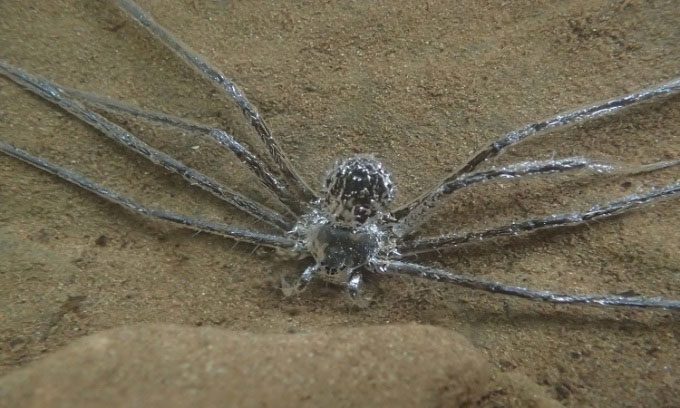A Tropical Spider Uses an Air Bubble to Hide Underwater for Half an Hour, Surprising Scientists.

The air bubble makes the spider look like it is covered in silver. (Photo: Lindsey Swierk)
Lindsey Swierk, an assistant professor of biology at Binghamton University in New York, observed a species of large tropical spider (Trechalea extensa) fleeing from humans and hiding underwater. Previously, researchers were unaware that this spider could utilize the water surface to evade predators for such an extended period. “For many species, being cold and wet can pose a life-threatening challenge equivalent to dealing with predators,” Swierk stated.
The spider remains submerged for about 30 minutes. When it sinks, it maintains a “layer of air” around its body. Swierk and colleagues suspect that the hairs covering the spider’s body help it retain this air bubble, preventing heat loss while underwater or stopping water from entering its respiratory system.
The air bubble surrounding the spider appears to be anchored by the waterproof hairs that cover its body. The spider looks as if it has been dipped in silver. This air bubble may serve as a barrier between the water and its respiratory system, while also minimizing heat loss in the cold water.
According to Swierk, this observation provides new insights into how spiders handle the challenge of finding shelter underwater. “Like any creature trying to evade predators, the Trechalea spider must do its utmost to cope with risks, including the threat of predation and the dangers of fleeing. For some species, this means abandoning territory or a mate, or relying on stored energy. For the Trechalea spider, the potential risks of hiding underwater may include difficulty breathing and loss of body temperature,” Swierk explained.
The research team described their observations in the journal Ethology on April 22. Swierk and colleagues believe that many questions remain to be answered from this initial observation.





















































